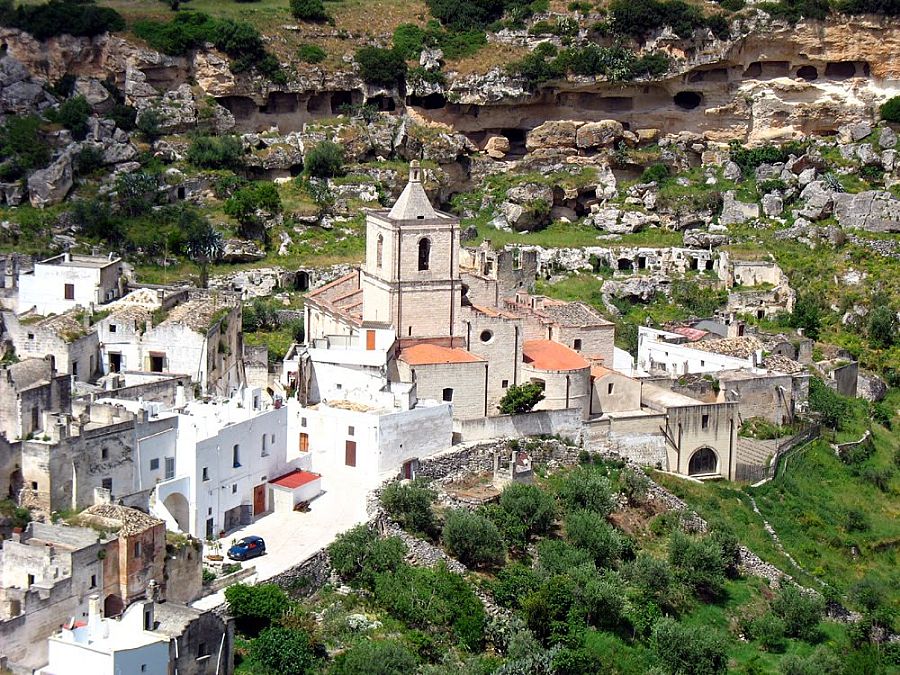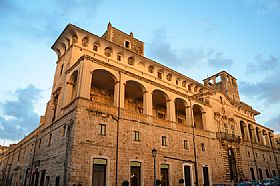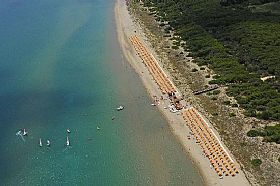Matera
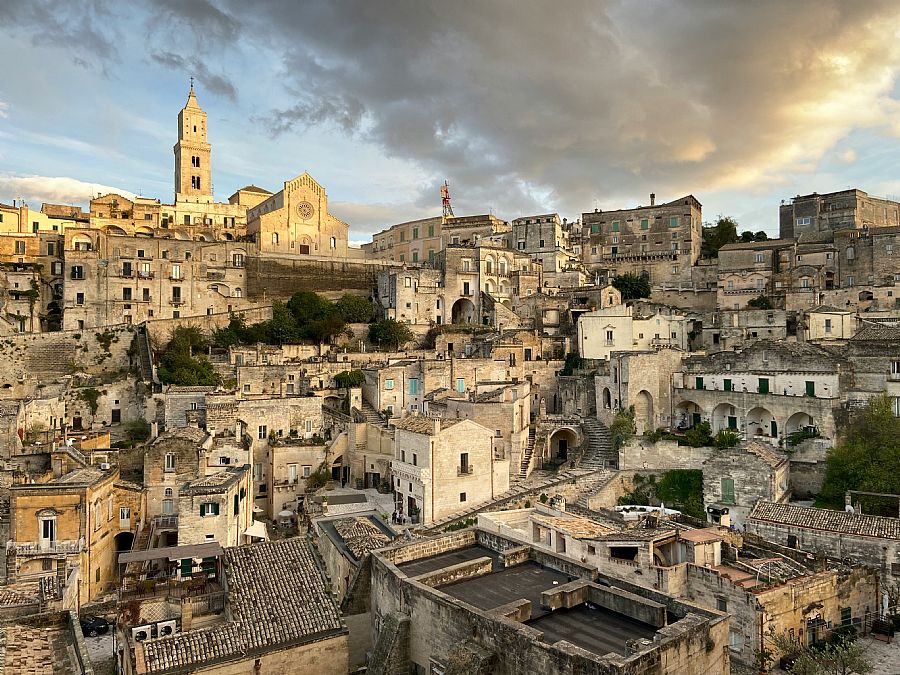
Matera, a captivating city in the southern region of Basilicata, exhibits antiquity. This UNESCO World Heritage site is considered the oldest continuously inhabited city in Europe, and it has every epoch of history incised in the tufa and on show in the sinewy passageways. More than a “cave city” as most articles like to say, it is an architecturally intricate place that is fascinating to wander. The ancient streets, worn shiny from the centuries, feel almost mystical. The old city gleams in the sunlight and turns magical in the moonlight.
“Anyone who sees Matera cannot help but be awestruck, so expressive and touching is its sorrowful beauty.” –Carlo Levi
Matera had periods of great prosperity and of great poverty. You can see glimpses of both by the architecture. Basilian monks came in the 9th century and carved out hermitage homes in the soft pocked rock, then richly decorated cave churches. It grew and became a cultural city, with wine, olive oil and other products being important here. Unfortunately, plagues and wars ravaged the city and the wealthy left the Sassi for the upper plain, abandoning them to the poorer populations. The intricate systems of water cisterns and sewage broke down and deprivation set it, especially after WWI. Carlo Levi, an anti-fascist writer who was exiled to a small town in the province called Aliano, had never actually visited Matera when he wrote his book Christ Stopped at Eboli (his sister had and wrote her accounts of it) his book was a wake-up call that many towns in the south, with Matera being the example, were in dire straights. The Sassi had been emptied and deemed unsanitary and much of its population rehomed to "new" areas in the surrounding area. Some families never actually left the Sassi, though, and in time the zone was recognized for its architectural and historical importance, eventually gaining UNESCO World Heritage status.
An Overview
Basilicata’s most famous city is isolated among billowing wheat fields where the scrub-dotted hills of Basilicata give way to the stark limestone plateau of Puglia. This fascinating place that is Italy’s most ancient city is well worth the trip.
Matera isn't flashy, but it is classy, as well as ancient. The town center and its main attraction, called the Sassi, aren’t visible until you arrive in their midst. The Sassi district– meaning “stones”- is the ancient core of Matera, and you have to go looking for it, because this particular district is like an inverted city, plunging downward from the plain into a deep ravine. Your first sight of the jumble of cliff dwellings will make you gasp in awe.
Matera has four districts. The Sassi, the soul of Matera, it is the ancient and unique city occupying the gravina gorge; it is built onto, into and out of the tufa rock in an incredibly complex design. The cliff is pocked by natural caves that were used as dwellings in the Bronze Age, and have been inhabited ever since, making Matera the oldest continuously inhabited city in Europe. There are two sections: the Sasso Caveoso is the less developed district, curving and conforming to the shape of the cliff; Sasso Barisano is the area that grew and developed as the city blossomed, where thousands of homes were constructed and excavated to become a truly intricate city. The Civita, the highest point and level area where the cathedral, civic buildings, and noble palaces were built. It had once been protected by walls. The Centro, known as the Piano, is the pulsing heart of the city, an area added as the population increased in the 1700s; with wider spaces, piazzas, and palaces, it wraps around the edge of Sassi and Civita. The New Town, the vast sprawl built in the post-war era when the Sassi were declared unfit for habitation and the population forcibly moved to newer and “better” homes.
Matera is one of Italy’s most architecturally complex cities. While it doesn’t embody the splashy splendor of Renaissance Florence or the austere Middle Ages like Siena, these periods, and every epoch before and after, are on display in the city nonetheless.
Often called a "cave city" because of the Sassi, you will quickly see it is much more. Even in the Sassi there are palazzi built out from the caves. The slick limestone streets are worn smooth from millennia of wear, winding ever-downward toward the ravine below the escarpment that the Sassi occupy. You’ll quickly see that there is much more to the Sassi than “just caves”.
Matera is a magical other world of mystical allure, its overall aura is one of antiquity. No wonder it has been used as a stand-in for the Holy Land in films; most recently, Ben Hur shot many location scenes here. The famed caves of the Sassi were inhabited in prehistoric times, then for centuries by Byzantine and Benedictine monks who carved out homes in the tufa rock and transformed primitive caves into color-coated churches, completely covered in decorative frescoes. There are more than 150 rock churches scattered in the caves on both sides of the ravine.
The only way to see the Sassi is by walking. A lot of it! I recommend you get an overview with the cute Ape Tours, then set off and get yourself lost in the labyrinth of lanes. This lets you see how many buildings are free-standing, built out from the cliff, layer upon layer, and feel the ancient aura of the place. You’ll appreciate the complexity of the urban plan. A guided walking tour also opens up the history and hidden corners to help make the most of your visit.
A Few Suggestions
Start in the Piazza Ridola, where the Palazzo Lanfranchi Museum has a cache of paintings by Carlo Levi,who was a political exile in Basilicata during the Fascist era. The author of Christ Stopped at Eboli was a talented artist. There are other works of regional art worth seeing and at only €2 entrance fee, it’s a bargain. A secret tip: You can also ask one of the docents to open the terrace for a nice view.
Next to the museum is a great overlook onto the Sassi to feast your eyes on the rock city below. Walk along Via Ridola and you’ll come to the somewhat macabre Church of Purgatory, adorned with lots of skulls and crossbones. If you want to exit purgatory, there are some great gelaterias around here that would make the angels sing! Continue Via del Corso, lined with shops, to the buzzing hub of Matera, Piazza Veneto. This is where you should be for the evening passeggiata, where you’ll see Matera is vibrant and alive with people. Off the piazza is an underground Roman ruin, while above it is a covered arcade overlook. Continuing from the piazza, tree-lined Via XX Settembre has some upscale shops.
Down in the Sassi, explore the lanes and marvel at the intricacy of this ancient city, hewn into the cliff, and constructed with blocks of tufa rock. It is more than a series of caves, as you’ll see there are elegant palaces and homes built out from the caves here. You’ll walk down, then up , and down...well, a lot of walking. The Sassi are much more extensive than you think, built over the hill and into the folds of the landscape. Walk the lower road, Via Madonna della Virtu’, to see the ravine on both sides –the built-up Sassi and the natural state of the other side. Visit the two churches built right into the rock, Santa Maria di Idris and San Giovanni. Amazing!
If you like to hike, take the Gravina trail that leads from the parking lot on this road; it goes down the ravine to the stream, and back up the other side on old mule paths. (There is a sign at the parking lot.)
But mostly, get yourself lost in the maze and notice all the details, from the chimneys poking through the streets to carvings to hidden courtyards. This is one fascinating city!
Drive to the “other side” to see the incredible sight of Matera in its entirety from the Parco della Murgia overlook. Along the way, stop at the lovely sculpture garden placed in the old tufa quarry, La Palomba. It’s a quiet place for a picnic among open-air art.
The ravine at the Parco della Murgia is awash in Byzantine chapels colorfully frescoed by monks of old. Reserve to see them, especially the gorgeous Crypt of Original Sin. (Reserve here: http://www.criptadelpeccatooriginale.it/prenotazioni.html)
Then return to the land of the living for a drink in Piazza Veneto while watching modern Matera at its best.
Practical Information
A car is the easiest way to get here. Matera is the only provincial capital in Italy without a train station! They are working on building rail links but for now, you cannot get to Matera by train. There are buses from Bari, Potenza and Naples, but schedules aren’t very convenient. Private drivers from Bari and Potenza are available for those who really do not want to drive.
The Sassi is the ancient district, while the city center is perched on the plain above. The Sassi are rock-hewn sections that fill the ravine’s steep face. There are two parts: Sasso Barisano and Sasso Caveoso. The Caveoso part is the oldest, and least developed.
There is only one road that allows traffic in the Sassi. There is no way to really see this area without a lot of walking.
The best way to really appreciate the hidden gems and history of the Sassi is with a local guide. We can arrange an excellent English-speaking guide for you.
(Text from Valerie Fortney, author of 52 Things to See and Do in Basilicata; used with express permission of the author. Special thanks for this, and her informative book.)
Enjoy the comfort of a vacation home in Basilicata.

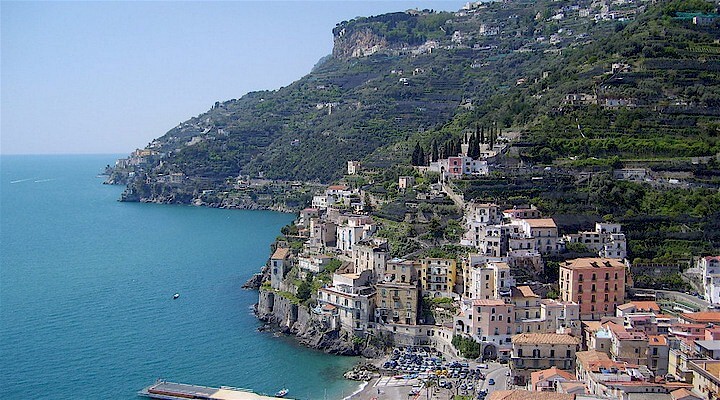 Amalfi Coast
Amalfi Coast Sorrento Coast
Sorrento Coast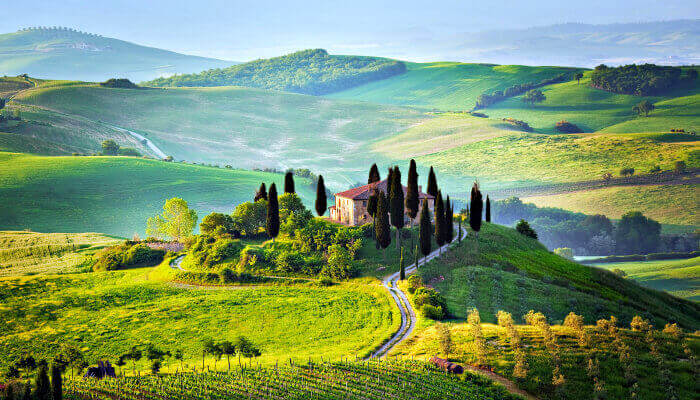 Tuscany
Tuscany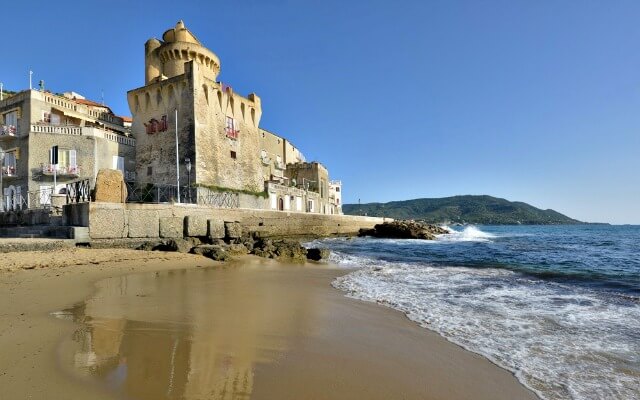 Cilento National Park
Cilento National Park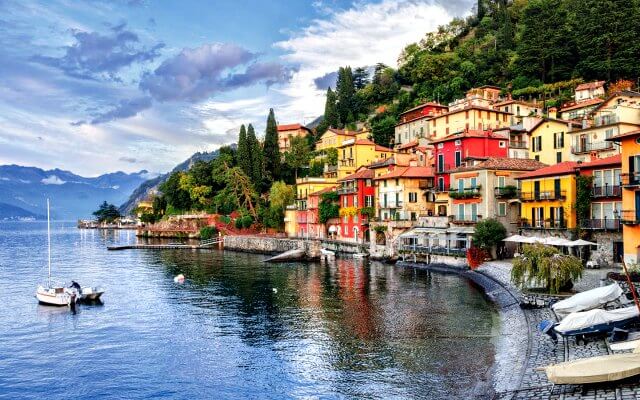 Lake Como
Lake Como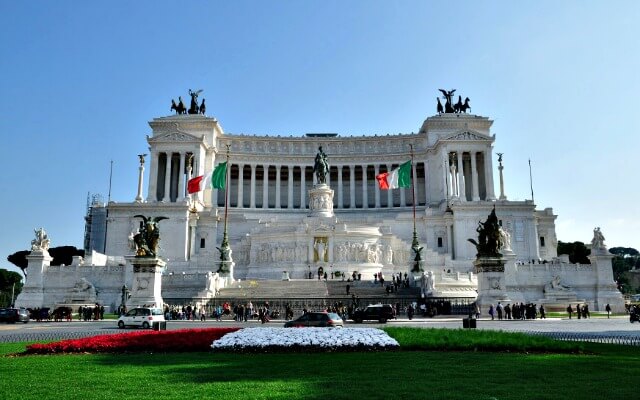 Rome and Latium
Rome and Latium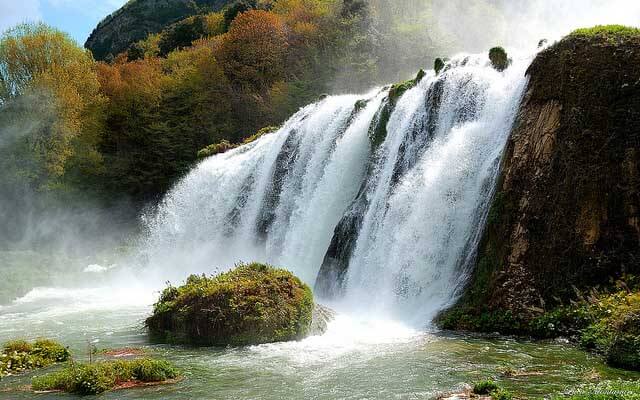 Umbria
Umbria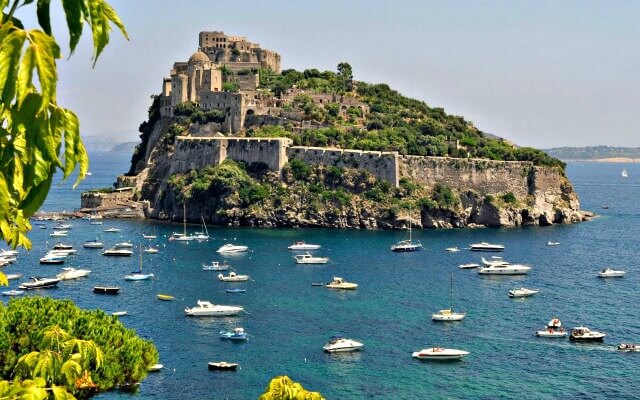 Capri and Ischia
Capri and Ischia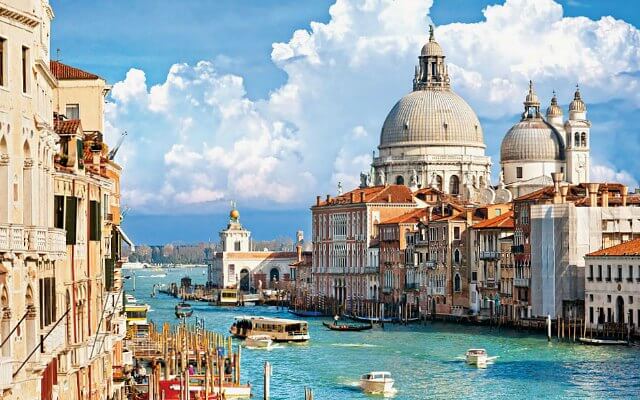 Venice
Venice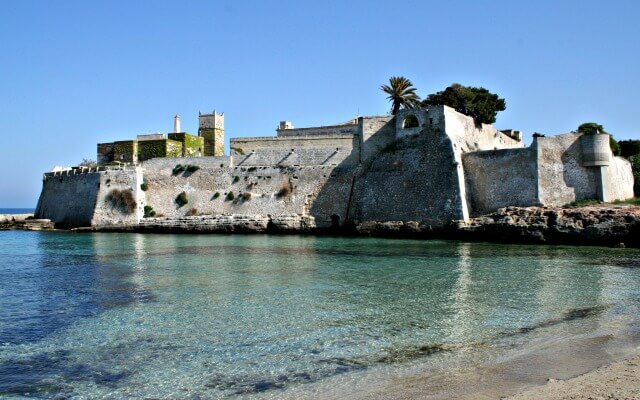 Puglia (Apulia)
Puglia (Apulia)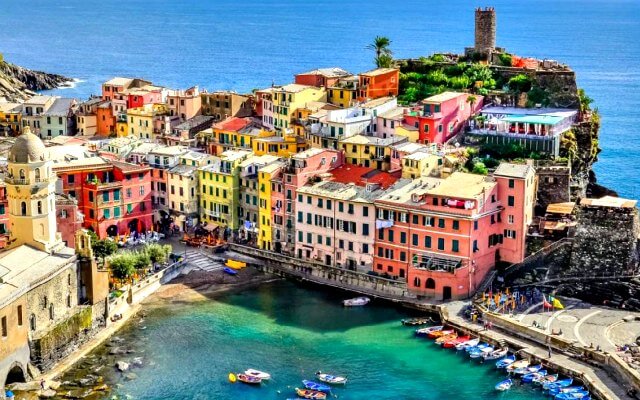 Liguria
Liguria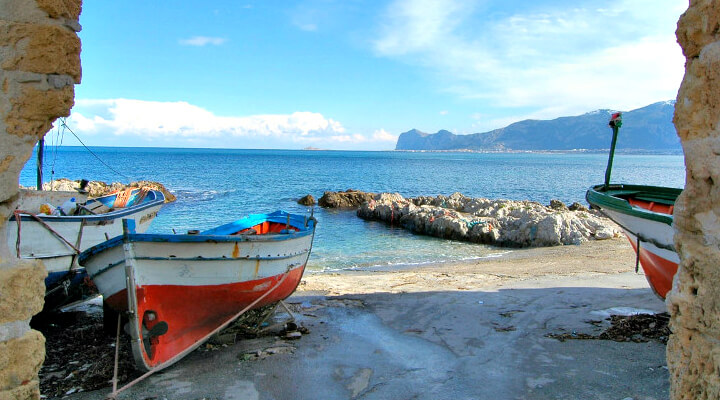 Sicily
Sicily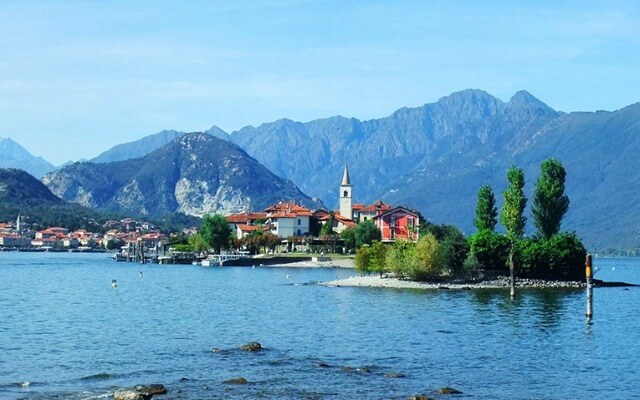 Lake Maggiore
Lake Maggiore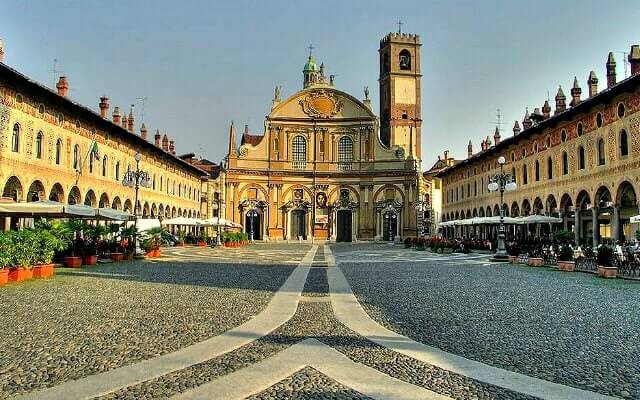 Lombardy
Lombardy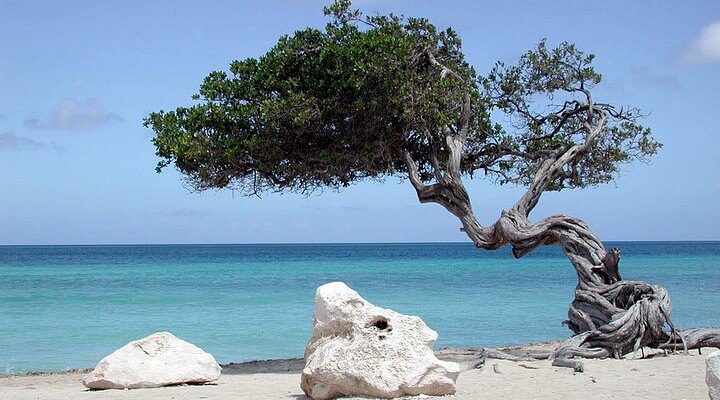 Sardinia
Sardinia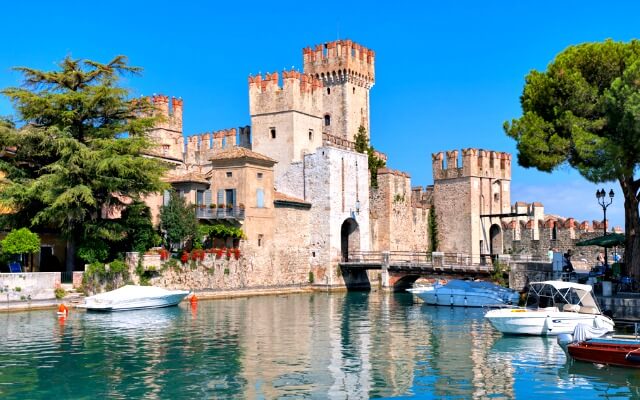 Lake Garda
Lake Garda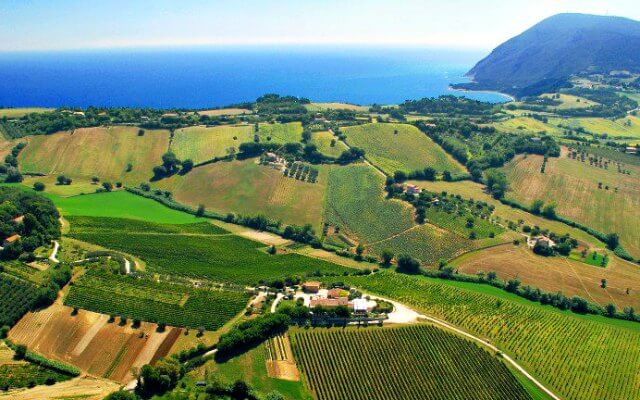 Abruzzo and Marche
Abruzzo and Marche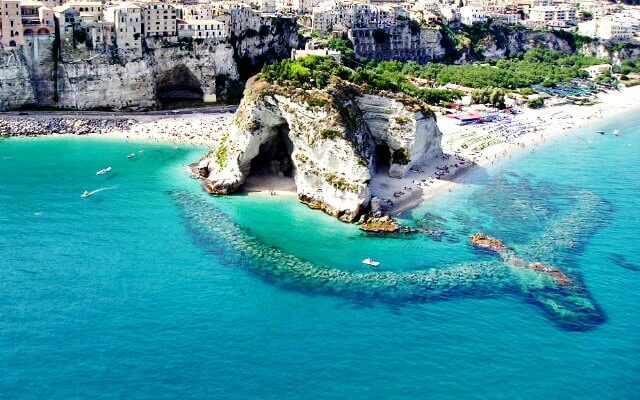 Calabria
Calabria